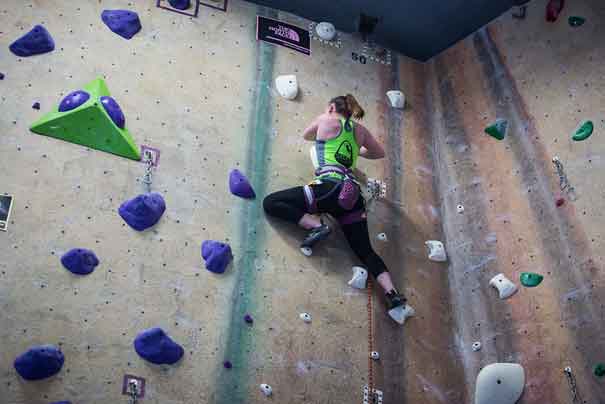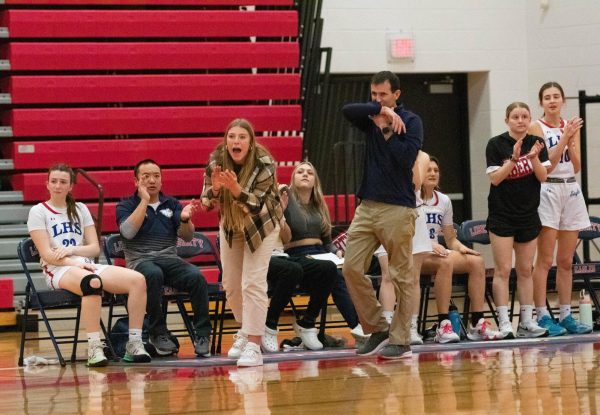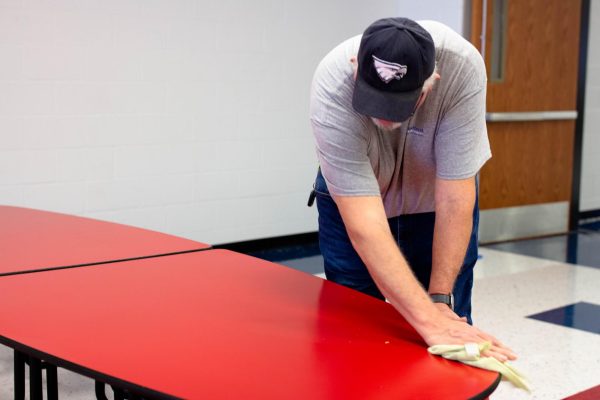Class on the Weekdays, Comp on the Weekends
Bamberger fills her already busy schedule with competitive rock climbing.
April 25, 2016
Like many Liberty students, Stacy Bamberger is busy. Between classes, homework, playing the viola, her little brother’s hockey schedule, and leaping from one page turning novel to another, she is able to add competitive rock climbing to her impressive agenda.
Competitive rock climbing is one of the more obscure sports in the world of athletics and was also rejected by the Olympics in 2013.
The little known sport is split into four main categories: lead, speed, bouldering, and duel. Not to be confused with mountain climbing, competitive rock climbing is performed indoors, but can be performed outdoors as well. Each “climb” or “route” has a certain grade that is based on a five point scale, a grade that you wouldn’t know going into a competition. Depending on the type of competition, a specific amount of time is given to the climber to scale the route, most commonly being two and half to three hours, though sometimes one doesn’t get so long to climb.
When judging, the judges will add the climber’s top five climb times and the climbers will then be henceforth placed accordingly. But in addition to this process, there are other factors included as well, such as division, the format of the route and rules. What may seem like an overwhelming flow of rules and guidelines to one, Stacy Bamberger has been handling all of them since she was 12.
“When I was little, I liked to climb everything,” Bamberger said. “I would climb the door frames, the railing on the stairs, and trees. And on the playground, I would climb the things that shouldn’t be climbed.” But it wasn’t Bamberger herself that would sign herself up for one of the teams, but rather a coach, who would recognize her talent.
“My uncle had taken my little brother and I to a rock climbing gym and one of the coaches saw me climbing and she kept talking to my uncle, asking if this was my first time, if I’ve ever climbed before or anything.” Bamberger says she wouldn’t make the decision of climbing on a team by herself, but rather her uncle.
“I really liked it and so for Christmas, my uncle said, ‘Hey, we signed you up for one of the rock climbing teams and you liked it and you like climbing things and the coach says you were really good,’ So I did the first season and really liked it, so I just continued,” Bamberger adds. And while she continued, Bamberger began to hold high standards for herself as a climber.
“Well, you have to be mentally and physically capable, so you at least have to be stronger than average. You have to put trust in yourself,” Bamberger explains. And though it seems like many climbers like Bamberger hold these high standards for themselves, many non-climbers find the sport, not a sport at all.
“I ask them if they’ve ever tried it,” Bamberger said. “If they have and still say it isn’t a sport, well, it’s their opinion. But if they haven’t tried it, I tell them that it’s something that uses your entire body, like your whole body has this strength that you didn’t know about and it’s a lot of work. I’d probably tell them to go try it and then talk to them after they’re done trying it.”
Those who say such things about the sport don’t bring her down.
Bamberger currently competes with the youth team at Upper Limits Indoor Rock Climbing Gym in West County and while she has not won any awards, she still aspires to her high expectations.
“I don’t know. I just like it,” Bamberger simply says when asked what her motivation is showing that sometimes the answer isn’t complex or complicated. Sometimes the answer is as easy as climbing to the top.




















Sonya Borders | Sep 9, 2016 at 9:36 am
This is a terrific article. I enjoyed reading about Miss Bamberger, and I am inspired to give this a try.